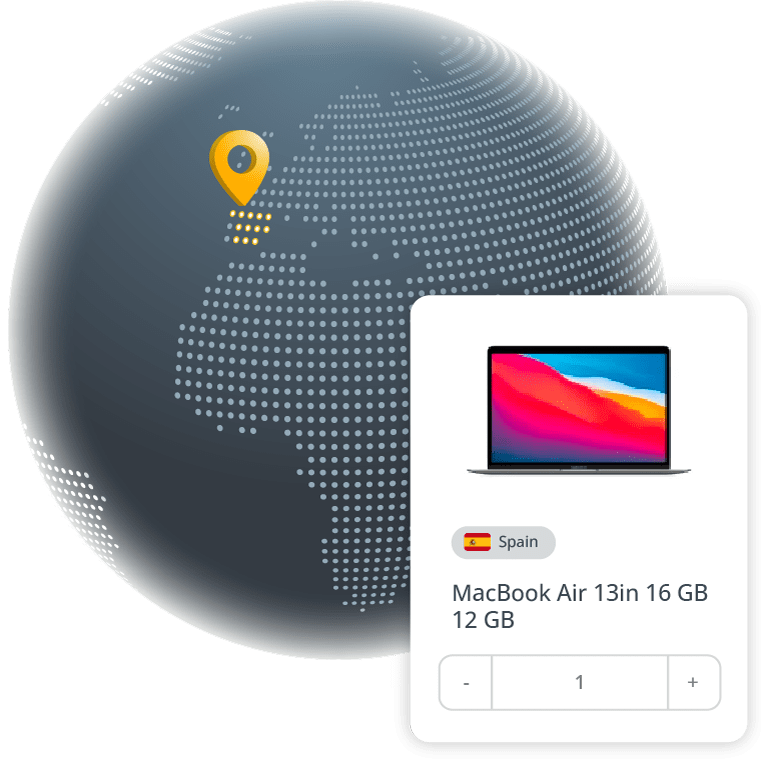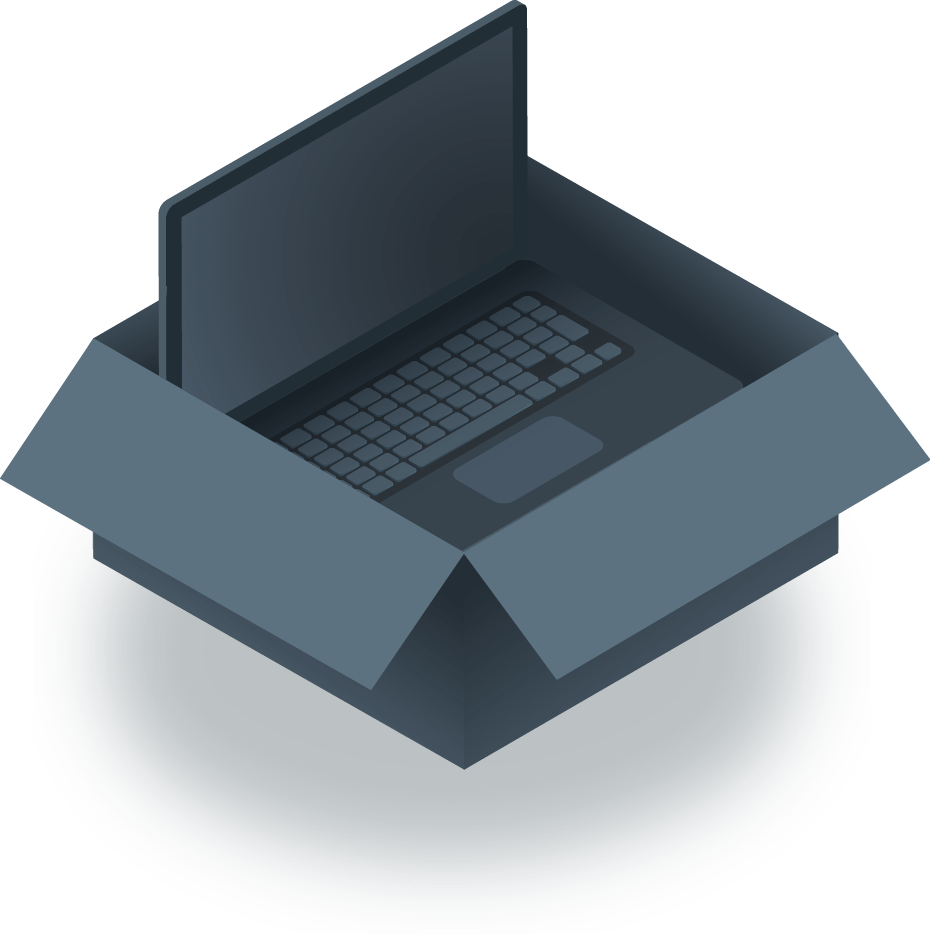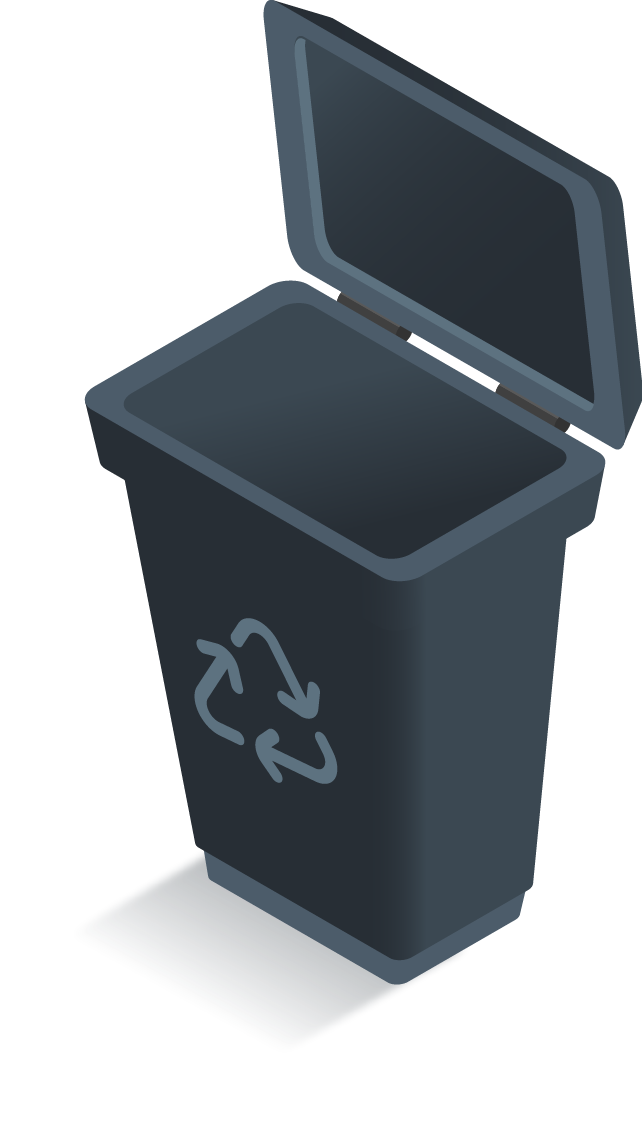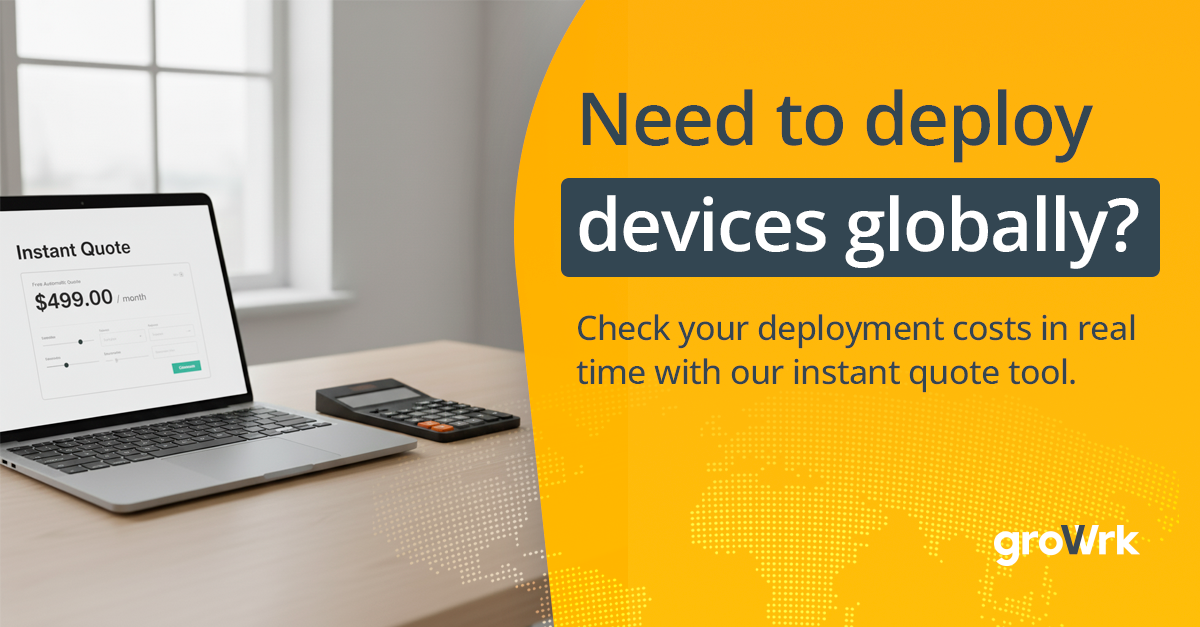How to send IT equipment to Spain
Are you looking to send IT equipment to Spain for your remote teams? At GroWrk, we specialize in managing IT asset distribution across borders, making it easy to get your laptops, servers, and other technology to Spain without the hassle. From handling logistics to ensuring compliance with local regulations and managing customs, we take care of it all.

At a glance
Spain’s IT landscape is growing rapidly, fueled by strong digital infrastructure, a thriving startup ecosystem, and increasing demand for cloud and cybersecurity services. Understanding the local market and regulations is crucial for businesses planning to send equipment or outsource IT services to Spain.
|
CURRENCY Euro (EUR) |
OFFICIAL LANGUAGE Spanish |
TIME ZONE CET / GMT+1 (GMT+02:00 during daylight saving time) |
|
CUSTOMS DUTY ON ELECTRONICS 3-5% Generally customs duties and 21% VAT on most goods, including electronics, with potential reductions or exemptions for certain products |
SHIPPING LEAD TIME 3-5 days Typically within Spain, with remote areas potentially taking longer |
IT OUTSOURCING MARKET €9.5 billion Valued approximately in 2024, it is projected to reach €11 billion by 2025 due to growing demand for IT services, cloud solutions, and digital transformation efforts |
Overview of IT operations in Spain

Digital infrastructure: Spain has robust digital infrastructure, with most households having access to high-speed internet (fiber optic and 4G). By 2025, the government plans to extend 5G coverage to 100% of the population. The fiber network is among the most extensive in Europe, covering 90% of urban areas.
IT outsourcing and managed services: The IT outsourcing market in Spain has grown significantly and is projected to grow by 7.42% (2025-2029) resulting in a market volume of US$15.47bn in 2029. Local firms are increasingly leveraging cloud, cybersecurity, and IT support services, with 30% of companies using outsourced IT for cost-efficiency and scalability.
Cybersecurity and data protection: With cybercrime on the rise, most Spanish companies consider cybersecurity a top priority. Spain is fully compliant with the GDPR and has experienced a 20% increase in cybersecurity investments over the past three years.
Talent pool and workforce: Spain's tech talent pool is growing, with over 400,000 professionals in the IT sector. However, there is a notable skills gap, especially in AI, data science, and cybersecurity.
Regulatory environment: Spain’s regulatory environment is shaped by EU laws, including GDPR, which mandates data protection standards. The Digital Spain 2025 plan seeks to digitally transform 50% of SMEs by 2025.
Shipping IT equipment to Spain: What you need to know
| Customs regulations |
| As a member of the EU Customs Union, Spain follows EU-wide customs regulations. These rules apply to all goods entering the country, including IT equipment. Customs authorities in Spain ensure that imported products comply with EU standards, including safety, environmental, and technical specifications. Customs clearance typically involves an assessment of the product's classification, origin, and value. |
| Duties and taxes |
|
| Required documentation |
|
| Import restrictions |
|
| New vs. Used equipment |
|
| Custom clearance process |
|
| Penalties or fines for non-compliance |
|
Checklist for sending laptops to Spain
When shipping laptops to Spain, it’s important to follow a few best practices to ensure the process goes smoothly, and your equipment arrives safely and on time. Here are some helpful shipping tips:

Select Trusted Couriers: Choose established couriers such as GroWrk, DHL, UPS, FedEx, or local carriers like SEUR for reliable international shipping. They offer tracking services and are familiar with customs procedures.
Check Service Levels: Depending on the urgency, opt for express or standard shipping. Express services generally take 3-5 days to reach Spain, while standard services may take up to a week.
Use High-Quality Packaging: IT equipment is fragile, so pack items with care. Use strong, padded boxes and cushioning materials such as bubble wrap, foam, or air cushions to protect the equipment from bumps or drops.
Disassemble Where Possible: If shipping large equipment like servers or monitors, disassemble removable parts (e.g., stands or cables) to prevent damage during transit.
Label Clearly: Ensure each package is clearly labeled with the recipient’s name, address, and contact information. Mark the contents as "fragile" to prompt careful handling.
Accurate Product Descriptions: On the commercial invoice, provide a detailed and accurate description of the equipment. Misleading or vague descriptions can cause delays or issues with customs clearance.
Value Declaration: Declare the correct value of the goods to avoid under- or over-declaring, which could lead to fines or delays in customs processing. The declared value also determines the amount of duty and VAT to be paid.
Customs Declarations: Ensure that all customs paperwork, such as the Single Administrative Document (SAD), commercial invoice, and packing list, is filled out correctly and included with the shipment.
Proof of Origin: If applicable, include a certificate of origin to prove where the equipment was manufactured. This can help reduce customs duties under EU trade agreements.
VAT Number: If you're a business, provide your Spanish VAT number to avoid paying VAT twice or to apply for tax exemptions if you're shipping for commercial purposes.
Understand Customs Fees: As mentioned earlier, IT equipment is subject to 0-5% customs duties and 21% VAT. Factor these costs into your shipping budget.
Pre-Pay Duties and Taxes: Some carriers offer the option to pre-pay customs duties and taxes, which can help streamline the delivery process and prevent the recipient from being charged extra upon arrival.
Protect Against Loss or Damage: Shipping valuable IT equipment can carry risks. Consider purchasing shipping insurance to protect against any potential loss, theft, or damage during transit.
Environmental Compliance: IT equipment needs to comply with EU regulations, including WEEE (Waste Electrical and Electronic Equipment) and RoHS (Restriction of Hazardous Substances). Ensure your products meet these standards before shipping.
Use Tracking Tools: Most major shipping carriers provide tracking services. Keep an eye on the shipment's progress to ensure it’s moving as expected.
Stay in Touch with the Recipient: Let the recipient know when to expect the delivery and if there are any delays or customs-related issues. Having the recipient prepared for any customs formalities will ensure quicker clearance.
Expect Weather and Seasonal Delays: Be mindful that weather conditions or high shipping volumes (like during holiday seasons) can cause delays. Factor this into your timeline when sending high-priority IT equipment.
Spanish Delivery Options: Depending on your recipient’s location, consider working with local delivery services in Spain to streamline last-mile delivery. Services like SEUR, Correos, and MRW are popular in Spain and often provide more efficient delivery options within the country.

Average cost of IT Equipment in Spain
Laptops (Business Grade):
- Mid-range: €700 - €1,400
- High-end: €1,400 - €3,000+
High-end models such as Apple (MacBook Pro), Dell (XPS), and Lenovo ThinkPads are priced on the higher end.
Monitors (Business Grade):
- Standard: €150 - €350
- Ultrawide/4K: €400 - €1,000
Monitors from trusted brands like Dell, Samsung, and LG typically range within these prices, with 4K or ultrawide models costing more.
Desktops (Business Grade):
- Standard Desktop PC: €500 - €1,500
- Workstation Desktop (for high-performance tasks): €1,500 - €3,500+
Prices depend on the brand and specifications, with options from HP, Lenovo, and Apple among the most common.
Printers (Laser):
- Standard Office Printers: €150 - €400
- High-Volume Printers: €600 - €2,000+
Leading brands such as HP, Canon, and Brother offer a wide range of models for office environments.
Public holidays & IT work hours to plan your shipment
Key Public Holidays in Spain:
- New Year’s Day (Año Nuevo) – January 1
- Good Friday (Viernes Santo) – Varies (March or April, depending on Easter)
- Labour Day (Fiesta del Trabajo) – May 1
- Assumption of Mary (Asunción de la Virgen) – August 15
- National Day of Spain (Fiesta Nacional de España) – October 12
- All Saints’ Day (Día de Todos los Santos) – November 1
- Constitution Day (Día de la Constitución) – December 6
- Immaculate Conception (Inmaculada Concepción) – December 8
- Christmas Day (Navidad) – December 25
- Boxing Day (Día de San Esteban) – December 26 (in Catalonia, Balearic Islands, and some other regions)
Some holidays, like Good Friday and Labour Day, are observed across all regions, while others are region-specific. Local holidays may also exist depending on the municipality or autonomous community. If you are shipping or managing IT assets in Spain, be aware that public holidays may affect shipping times, customs processing, and business operations.
Typical work hours for IT professionals
-
Work Week: Typically, 40 hours per week is standard, though some companies may operate with flexible hours or reduced hours in certain cases.
-
Workday: The standard workday usually runs from 9:00 AM to 6:00 PM with a 1-2 hour lunch break. However, the lunch break can be longer in some sectors, especially if employees observe the traditional Spanish lunch hours (around 1:30 PM to 3:30 PM).
What to consider when retrieving IT equipment from employees in Spain?
| Local delivery and logistics services |
|
| IT Inventory Management |
|
| Employee transition process |
|
| Communication with Employees |
|
How to dispose of IT equipment in Spain
Data Wiping
-
Use certified data destruction software: Tools like Blancco, DBAN, or other industry-standard software ensure that all personal, business, and sensitive data is fully wiped from devices.
-
Physical destruction: If data wiping isn’t possible (e.g., for hard drives), physically destroy the device (e.g., shredding, crushing) to ensure no data is recoverable.
WEEE Compliance (Waste Electrical and Electronic Equipment Directive)
Spain follows the WEEE Directive, an EU regulation for the responsible disposal and recycling of electrical and electronic waste:
-
Register with WEEE-compliant schemes: If your business is placing IT equipment on the market, you must ensure your equipment is registered with a certified WEEE compliance scheme.
-
Authorized collection points: IT equipment should be taken to an authorized recycling center or WEEE collection point. Many retailers and local councils also offer collection services for old electronics.
-
Penalties or fines for non-compliance:
-
Failure to Register: Fines from €1,000 to €200,000.
-
Improper Disposal: Fines for failure to properly recycle or dispose of hazardous materials.
-
Hazardous Waste Disposal: Fines for improper disposal can reach up to €1 million for large-scale violations.
-
Disposal of Batteries
-
Proper disposal of batteries: Batteries must be disposed of separately at certified recycling points. You can take them to local waste collection centers or retail locations that accept batteries for recycling.
-
Follow hazardous waste guidelines: Lithium-ion batteries are classified as hazardous waste, so ensure they are disposed of according to ADR (transport regulations) and IATA (for air transport) standards if applicable.
Donation or Resale
-
Donation: Consider donating it to charities or schools that accept used devices. Ensure the devices are fully wiped of all data before donation.
-
Resale: If the equipment has resale value, you can also choose to sell it or trade it in. Ensure proper data destruction has been carried out before any transfer.

Local IT Outsourcing Solutions in Spain
You can streamline your IT logistics and asset management with GroWrk’s comprehensive global solution. Whether it’s shipping equipment or managing IT assets across multiple regions, GroWrk helps you stay compliant and efficient, every step of the way. Here’s why GroWrk is the ideal partner for managing your IT assets in Spain:

| 1. Wide global coverage |
| With operations in over 150 countries, including Spain, GroWrk guarantees smooth deployment and management of your IT equipment to remote teams throughout the country. Wherever your employees are located in Spain, we ensure timely and hassle-free service. |
| 2. End-to-End Asset Management |
GroWrk simplifies the entire lifecycle of IT assets—covering procurement, deployment, management, and retirement. By handling all aspects of your IT asset lifecycle, we allow your team to focus on driving business growth, while we take care of the logistics. |
| 3. Intuitive Platform for Easy Deployment |
GroWrk’s user-friendly platform makes it effortless to deploy and manage devices in Spain. With just a few clicks, you can order, ship, and track IT equipment, reducing administrative overhead and minimizing costly errors. Our platform empowers your IT team with tools that streamline operations, cutting down on time and costs. |
| 4. Smooth Delivery and Equipment Retrieval |
From delivering laptops and IT gear to remote employees across Spain to ensuring smooth retrieval of assets from outgoing team members, GroWrk handles it all. We simplify the process so your team can focus on what matters most—delivering results. |
| 5. Compliance with Spanish Import Regulations |
GroWrk ensures that all shipments adhere to Spain's import requirements, including compliance with local regulations such as CE certification and tax obligations. By managing these details, we eliminate the risk of delays or fines, ensuring your IT equipment arrives on time and fully compliant. |
| 6. Efficient Repairs and Maintenance |
GroWrk takes care of the entire repair and maintenance process, ensuring your devices are always in top working condition. From routine checkups to emergency fixes, we handle everything, allowing you to keep your teams productive without worrying about technical disruptions. |
| 7. 24/7 Support for Peace of Mind |
Whether you need shipping, asset management, or troubleshooting assistance, GroWrk offers round-the-clock customer support. Our team is available anytime to guide you through the complexities of IT asset management and help you resolve any issues quickly. |
Procure, configure, and deploy your IT devices from one platform


